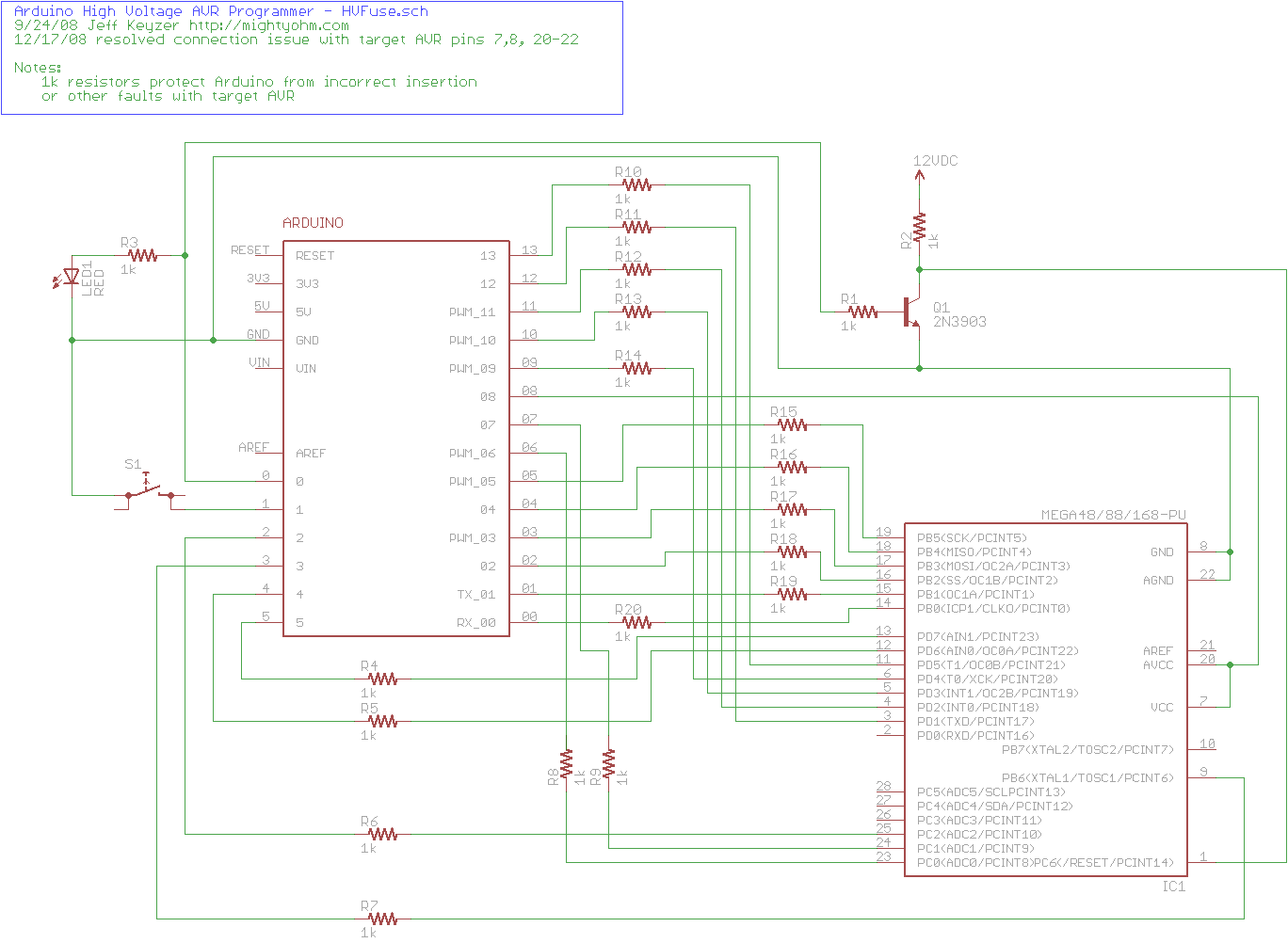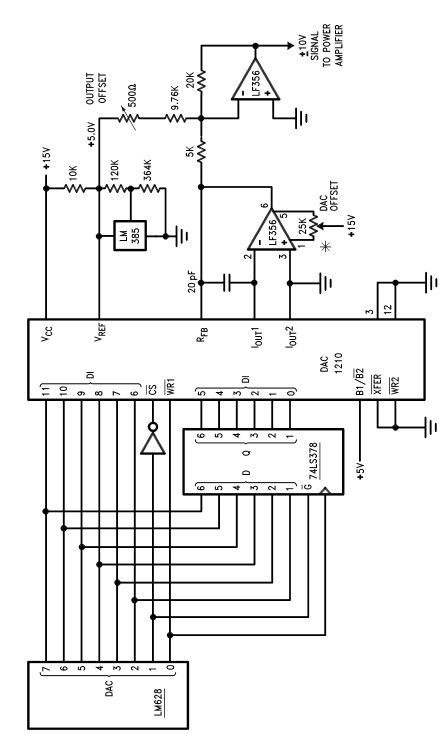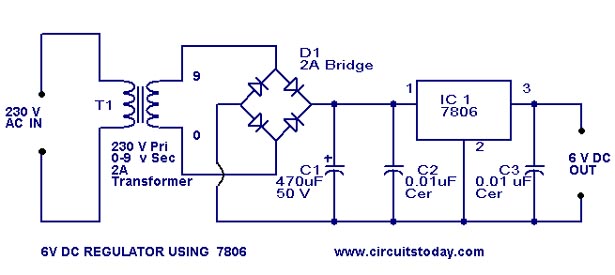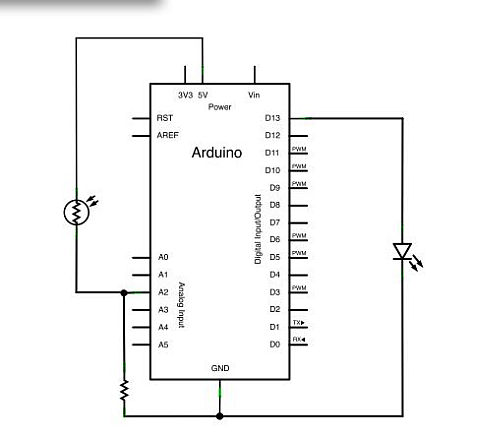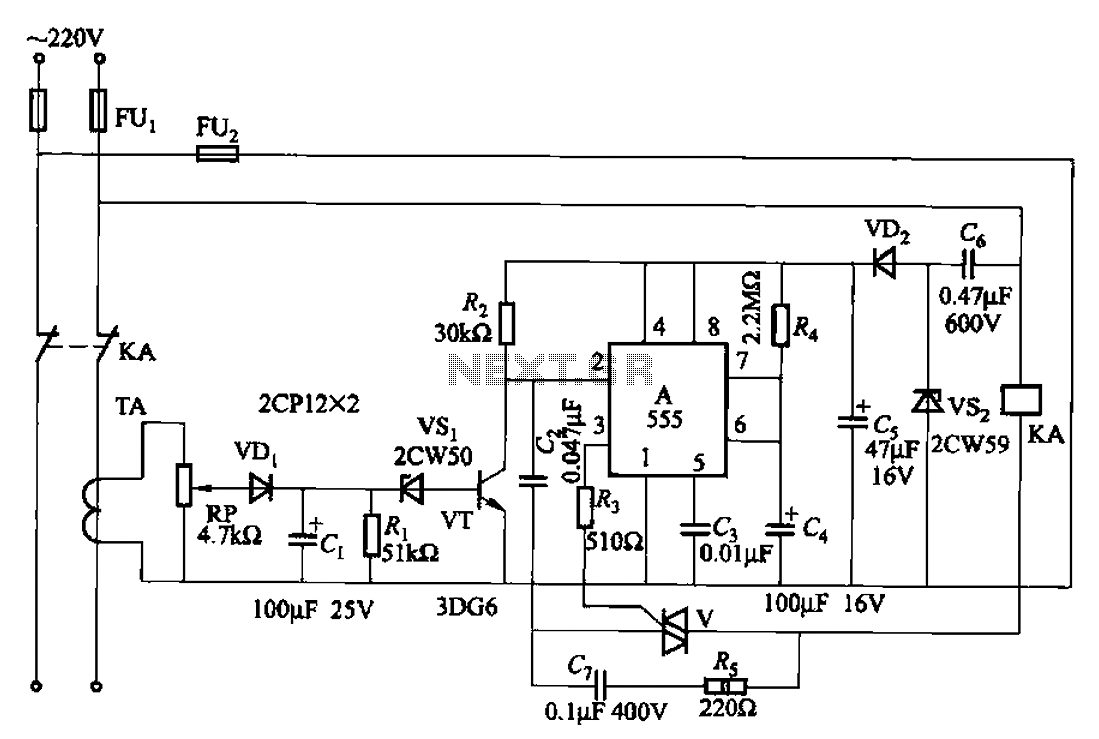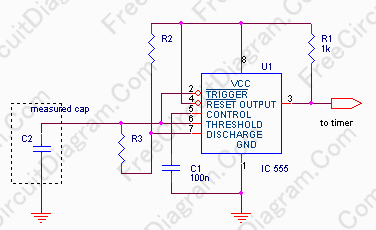
Apply a Pulse to a Speaker Using a Capacitor

This project demonstrates how a capacitor can supply a pulse signal to a speaker. A capacitor is charged and then discharges its voltage to a speaker, which acts as a transducer that converts electrical signals into sound. The result is a sharp click sound. When the first pushbutton (Pushbutton 1) is pressed, the capacitor charges up to the 9 volts supplied by the power source. After a few seconds, Pushbutton 1 is released, and then Pushbutton 2 is pressed. This action causes the capacitor to discharge its stored voltage, producing a sharp click sound from the speaker that occurs once and gradually fades away as the voltage decreases from 9 volts to 0 volts.
The circuit for this project includes a capacitor, two pushbuttons, a speaker, and a power supply. The capacitor is connected in parallel with the speaker. The first pushbutton is wired to the positive terminal of the power supply and the capacitor, allowing the capacitor to charge when pressed. A resistor may also be included in series with the pushbutton to limit the charging current and protect the capacitor from damage.
Once the capacitor is fully charged, releasing Pushbutton 1 isolates it from the power supply, and pressing Pushbutton 2 connects the capacitor to the speaker. The discharge path allows the stored energy in the capacitor to flow into the speaker. The speaker converts this electrical energy into sound waves, resulting in the audible click.
The duration and volume of the click sound depend on the capacitance value and the load presented by the speaker. As the capacitor discharges, the voltage will drop from 9 volts to 0 volts, causing the sound to fade. The discharge time can be adjusted by changing the capacitance or incorporating a resistor in the discharge path to control the rate at which the capacitor releases its stored energy.
This simple circuit effectively illustrates the principles of capacitance, charging, and discharging, while also demonstrating the conversion of electrical energy into sound energy through the use of a speaker.For this project, we`re going to demonstrate how a capacitor can supply a pulse signal to a speaker. We`re going to charge a capacitor and then discharge the voltage of the capacitor to a speaker. The speaker, a transducer which turns electrical signals into sound, will play out the discharging voltage of the capacitor. What you should hear in the end is a sharp "click sound. " When you press down the first pushbutton, Pushbutton 1, you charge the capacitor up. After a few seconds, the capacitor will be charged up to the 9 volts that the power supply is supplying it. Now release pushbutton1 and now press down pushbutton 2. The capacitor now discharges the voltage it charged up. The result is that the speaker plays out this discharging as a sharp click sound that occurs once and then fades away.
This is because the capacitor discharges at 9 volts and then decreases until it`s 0 volts. 🔗 External reference
The circuit for this project includes a capacitor, two pushbuttons, a speaker, and a power supply. The capacitor is connected in parallel with the speaker. The first pushbutton is wired to the positive terminal of the power supply and the capacitor, allowing the capacitor to charge when pressed. A resistor may also be included in series with the pushbutton to limit the charging current and protect the capacitor from damage.
Once the capacitor is fully charged, releasing Pushbutton 1 isolates it from the power supply, and pressing Pushbutton 2 connects the capacitor to the speaker. The discharge path allows the stored energy in the capacitor to flow into the speaker. The speaker converts this electrical energy into sound waves, resulting in the audible click.
The duration and volume of the click sound depend on the capacitance value and the load presented by the speaker. As the capacitor discharges, the voltage will drop from 9 volts to 0 volts, causing the sound to fade. The discharge time can be adjusted by changing the capacitance or incorporating a resistor in the discharge path to control the rate at which the capacitor releases its stored energy.
This simple circuit effectively illustrates the principles of capacitance, charging, and discharging, while also demonstrating the conversion of electrical energy into sound energy through the use of a speaker.For this project, we`re going to demonstrate how a capacitor can supply a pulse signal to a speaker. We`re going to charge a capacitor and then discharge the voltage of the capacitor to a speaker. The speaker, a transducer which turns electrical signals into sound, will play out the discharging voltage of the capacitor. What you should hear in the end is a sharp "click sound. " When you press down the first pushbutton, Pushbutton 1, you charge the capacitor up. After a few seconds, the capacitor will be charged up to the 9 volts that the power supply is supplying it. Now release pushbutton1 and now press down pushbutton 2. The capacitor now discharges the voltage it charged up. The result is that the speaker plays out this discharging as a sharp click sound that occurs once and then fades away.
This is because the capacitor discharges at 9 volts and then decreases until it`s 0 volts. 🔗 External reference
